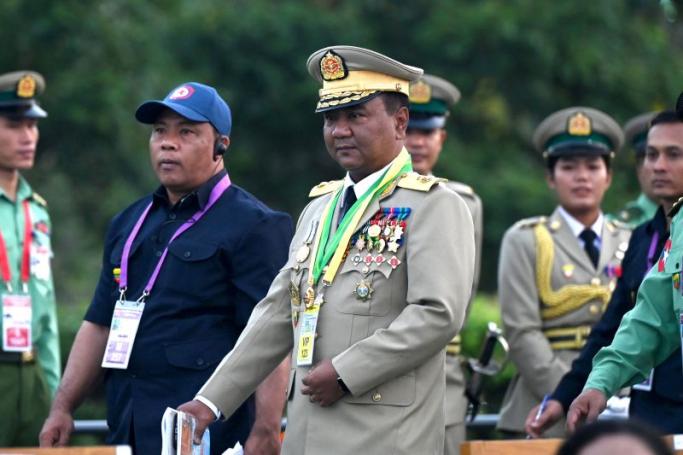Mizzima
For the first time, extensive research has mapped the Myanmar Army's entire Chain of Command and technically who amongst the military may be responsible for incidents of human rights abuse.
A report by Security Force Monitor (SFM), a project of the Columbia Law Human Rights Institute in the US, has published a study entitled “Under Whose Command?” that covers a period of 12 years until March 30, 2023 and reveals the links between low-level soldiers accused of human rights abuses against civilians and their commanding officers and beyond.
The report says that in many areas of the country, almost every single person who ever held command had disappearances, killings, rape or instances of torture allegedly committed by units under their command, and notes this is particularly true in areas of longstanding conflict and concern for human rights abuses.
Looking at thousands of data sources from March 30, 2011 when Senior General Min Aung Hlaing became Commander-in-Chief, the research found 64 per cent (51 of 79) of all senior army commanders had alleged disappearances, killings, rape or instances of torture committed by units under their command.
In addition, 54 per cent (28 of 51) of the commanders were promoted in rank after at least one alleged disappearance, killing, rape or instance of torture was committed by the units under their command. Of the others, nine could not be promoted in rank further.
The research suggests the killings were “part of a pattern” and that in the past 12 years, five of the six commanders of Southeastern Regional Military Command had had at least one allegation of killing, rape, or torture committed by units under their command.
The research also documents the entire chain of command behind the 2015 rape, torture and killing of two Kachin teachers in northeastern Myanmar. At the time, local villagers said the army’s 503rd Light Infantry Battalion was stationed near the village when the women were killed.
It is hoped the research can help support legal action and ensure justice for those who had lost loved ones as a result of the military’s actions.
The research details the hierarchy and control exercised by senior commanders over hundreds of units throughout a twelve-year period.
Through this project, the entire chain of command is clear and it is possible to identify who was in command when each alleged human rights abuse occurred between 30 March 2011 and 30 March 2023.
Proving individual responsibility for war crimes and crimes against humanity is a complex task. This is especially true in Myanmar, where secrecy around the army’s structure has long hampered efforts for accountability.
On 30 March 2011, Min Aung Hlaing became Commander-in-Chief of the Armed Forces of Myanmar, otherwise known as the Tatmadaw. The Myanmar Army is by far its largest and most powerful branch of the armed forces. Since Min Aung Hlaing took command of the military, the United Nations, human rights groups and others have accused the Myanmar Army of committing genocide, crimes against humanity and war crimes across the country.
During the same period, Myanmar initially appeared to be on a path towards greater democracy and civic participation. That ended in February 2021. Led by Min Aung Hlaing, the army ousted the democratically-elected government, headed by the National League for Democracy party, in a coup d'état. Civilian protest was met with a wave of violence unleashed by the armed forces. Today, the army is accused of continuing to enact a brutal crackdown including arbitrary arrest, torture, enforced disappearances and mass killings.
Since 2011 more than 60 per cent of the senior commanders of the Myanmar Army have had disappearances, killings, rape or torture allegedly committed by units under their command.
This research shines new light on the control exercised by senior army commanders over the conduct of individual army units.
The vast majority of senior army commanders over a twelve-year period can be linked through the chain of command to allegations of disappearances, killings, rapes and torture.
The report can be found at:
https://myanmar.securityforcemonitor.org/












